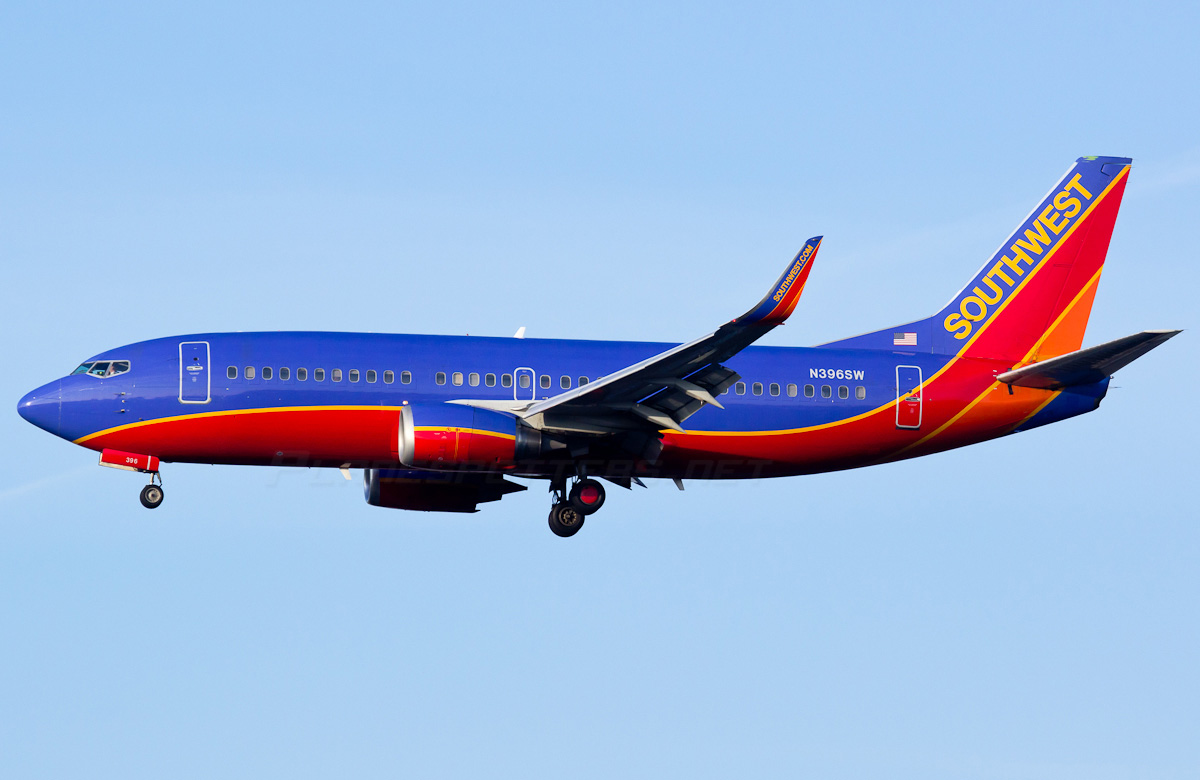
Boeing 737 Summary
The Boeing 737 is a short- to medium-range twinjet narrow-body airliner. Originally developed as a shorter, lower-cost twin-engine airliner derived from Boeing’s 707 and 727, the 737 has developed into a family of ten passenger models with capacities from 85 to 215 passengers.
The first-generation, launched in 1967, consisted of the 737-100, -200, and -300. In the 1980s, the next generation, or “Classic” series launched, and were called 737-400, – 500, and -600; they featured added capacity, wing design improvements, and upgraded engines.
In the 1990s, the “Next Generation” 737s debuted, called 737-700, -800, and -900. They featured upgraded wings and aerodynamics, a “glass” cockpit, new interior, and larger fuel capacity. These changes permitted intercontinental service, a first for the 737.
Launching in 2017, the “MAX” 737 will be put into production, and called 737-MAX7, -MAX8, and MAX9. These new versions feature high-efficiency wingtips, the new SKY interior from the Dreamliner, additional fly-by-wire controls, upgraded LCD displays from the 787, new engines, and other changes to the airframe.

Boeing 737 History
The first 737 was the last new airplane to be built at Plant 2 on Boeing Field in Seattle, with a production run that included the legendary B-17 Flying Fortress, B-52 Stratofortress and the world’s first large swept-wing jet — the XB-47 Stratojet. While the old assembly building at Plant 2 seemed cavernous, it still wasn’t tall enough for the 737’s tail, which was attached using a crane in the parking lot.
At a ceremony on Jan. 17, 1967, the first 737 was introduced to the world. The festivities included a christening by flight attendants representing the 17 airlines that had ordered the new plane.
In 1967, the smaller, short-range 737 twinjet was the logical airplane to complement the 707 and the 727. There was increasing demand for transports in its category, but the 737 faced heavy competition from the Douglas DC-9 and the British Aircraft Corp. BAC 1-11.
To save production time, and get the plane on the market as soon as possible, Boeing gave the 737 the same upper lobe fuselage as the 707 and 727 so that the same upper deck cargo pallets could be used for all three jets.
The 737 had six-abreast seating — a selling point, because this way it could take more passengers per load (the DC-9 seated five abreast). The number of seats in the 737 also was increased by mounting the engines under the wing. This engine placement buffered some of the noise, decreased vibration and made it easier to maintain the airplane at ground level. Like the 727, the 737 could operate self-sufficiently at small airports and on remote, unimproved fields. The plane’s performance in these conditions led to orders in Africa, Central and South America, Asia and Australia.
New technology made the position of flight engineer redundant; the 737’s two-person flight deck became standard among air carriers.
On Dec. 28, 1967, Lufthansa took delivery of the first production 737-100 model, in a ceremony at Boeing Field. The following day, United Airlines, the first domestic customer to order the 737, took delivery of the first 737-200. The last 737-200 was delivered in 1988.
By 1993, customers had ordered 3,100 737s, and the company was developing the Next-Generation 737s — the -700, -800 and -900.
The 126- to 149-seat 737-700 was launched in November 1993 and first delivered in December 1997. The 162- to 189-seat 737-800 was launched Sept. 5, 1994. The 110- to 132-passenger 737-600 was first delivered in 1998, and the 177- to 189-passenger 737-900 was first delivered in 2001. Customers began ordering the -900’s replacement, the higher capacity, longer range 737-900ER, in 2005.
In July 2012, the 737 became the first-ever commercial jet airplane to surpass the 10,000 orders. By 2014, Boeing was building 42 737s at its Renton, Wash., factory every month, and planned to increase the rate 52 per month in 2018 to meet continuing demand.

Boeing 737 Fun Facts
The 737 is the best-selling commercial jetliner of all time.
In 1965, the Boeing name was synonymous with big multi-engine jet airplanes, so when the company announced its new commercial twinjet, the 737, it was called the “Baby Boeing.”
On the average about 1,000 737s are in the air at all times; one takes off every 5.5 seconds.
There are approximately 357,000 parts in 737-300/-400/-500s. About 600,000 bolts and rivets fasten these parts together.
Typically, about 50 gallons of paint are used to paint an average 737. The paint weighs approximately 300 pounds.
There are approximately 40.5 miles of wire in a 737-300.
The tires are exposed to the air since the aircraft doesn’t feature gear doors.
There is no fuel dump system, since the original aircraft were too small and it would’ve added a weight penalty to later aircraft, so 737s either circle to burn fuel or land overweight.
Because of the plane’s low design, engines are very close to the ground, necessitating non-circular air inlets.
A weight reduction of 700 pounds on a Boeing 737-800 results in 0.5% reduction in fuel burn.

Thanks for aquainting with knowledge on boeing jetliner.
I have noticed you don’t monetize wheresmychampagne.com, don’t waste your traffic, you can earn additional bucks every month with new monetization method.
This is the best adsense alternative for any type of website (they approve all websites), for more info simply search in gooogle: murgrabia’s tools
Interesting company and amazing accomplishments. I applaud Boeing for starting to pull out of liberal Washington state. Washington doesnt deserve to have Boeing anymore.